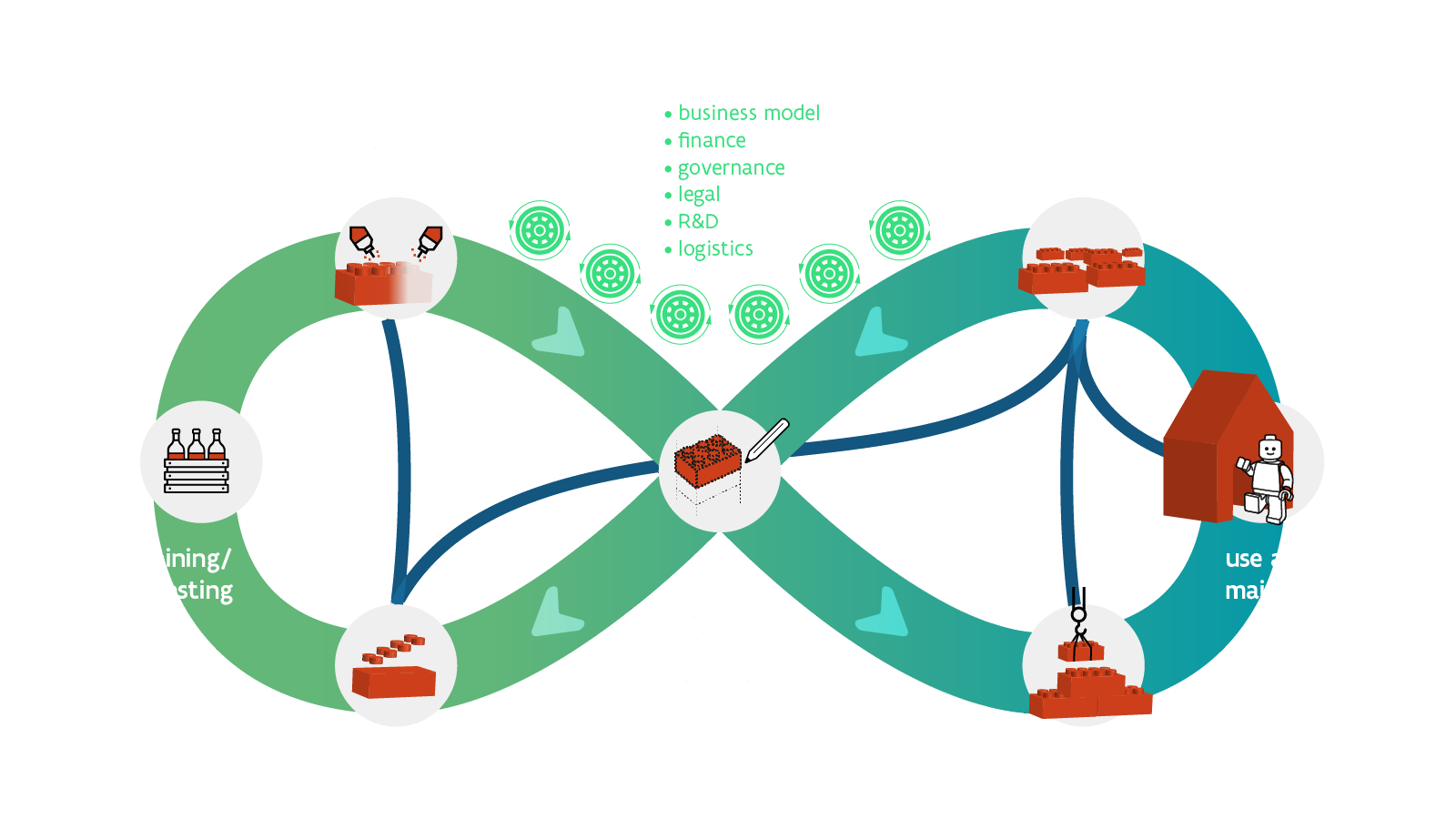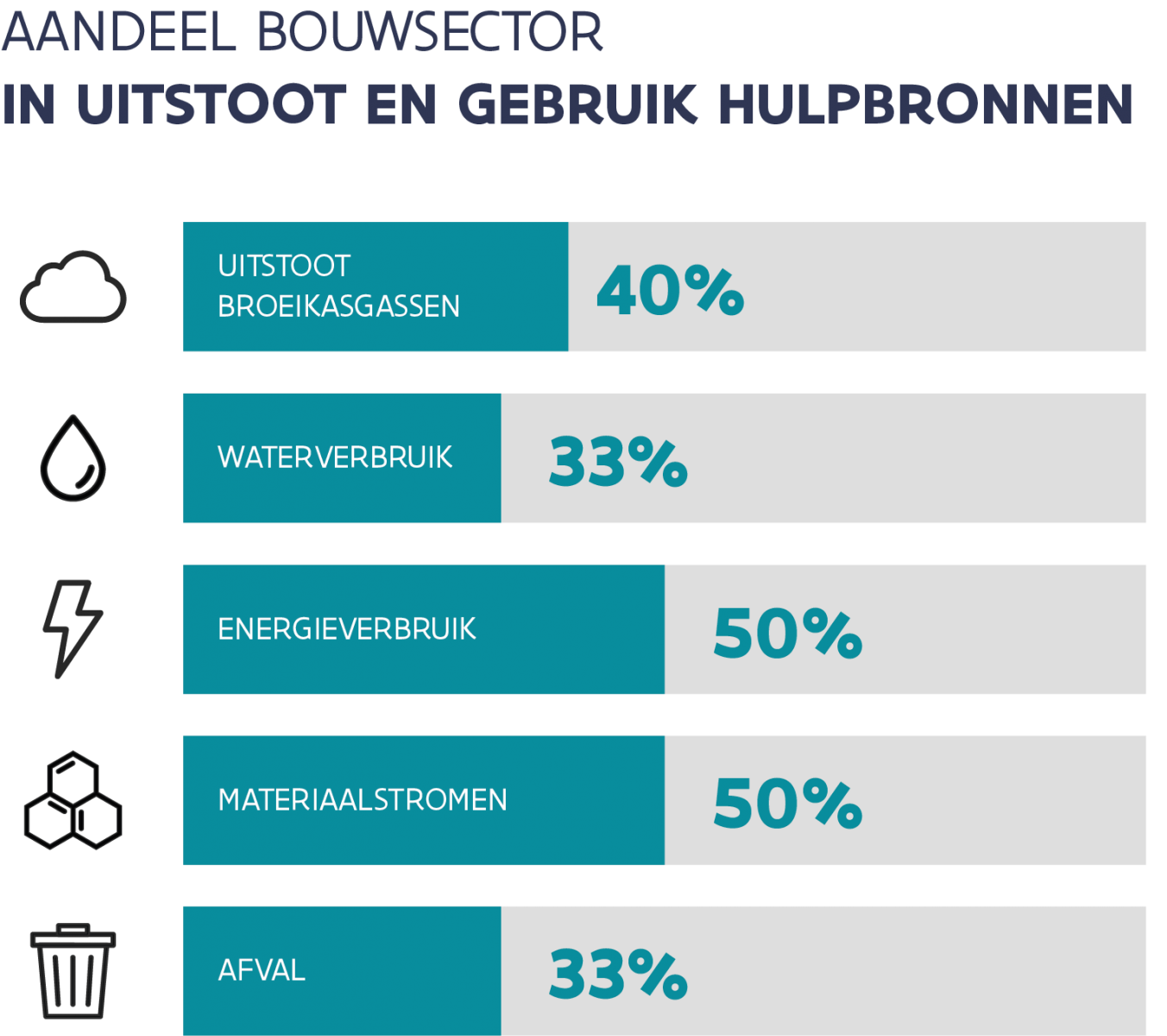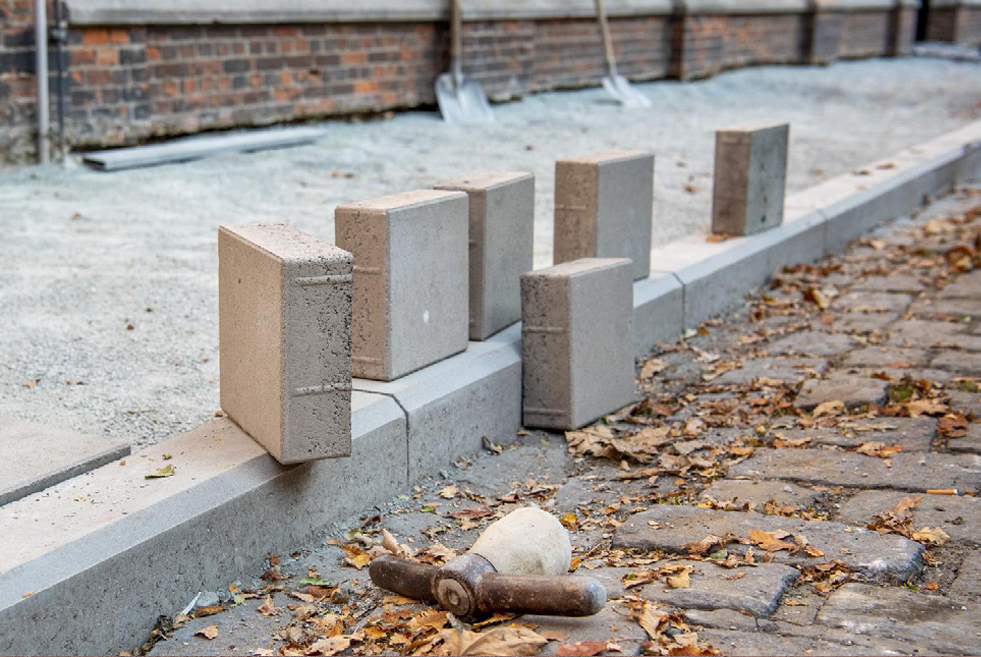What is circular construction?
Circular construction strives for an efficient and effective use of resources. The aim is to create or at least maintain economic, social and ecological (added) value. During the construction process, the existing legacy and future opportunities specific to our construction world are taken into account.
Would you prefer our scientific definition?
This pursuit requires the creation of various kinds of levers : in business, governance, legal, logistics, financing, research and training.
Explanation of the use of the term
- The term ‘circular construction’ is an umbrella term and covers
- multiple levels (material, element, building and area development),
- multiple life cycle stages (from - avoiding - extraction of raw materials, up to and including the reuse of buildings, components, materials)
- multiple actors (producer, designer, contractor, building manager, owner, financier, policy makers, etc.)
- multiple interaction (transfer of money, information and materials)
- It follows that a circular building practice goes beyond designing, erecting new buildings and renovating existing ones, but also beyond all the supporting processes.
- The term ' resources' is used here to cover the full spectrum of raw materials, water, energy and space
- Efficient use of resources means the economical and responsible use of often scarce resources
- Effective or efficacious use of resources includes avoiding the clearing of land / tapping new resources
- Within a circular alternative, the entire value network is scrutinised, whereby collaboration is sought between all the decision-makers in the entire chain.
- Such intense cooperation should lead to the development of opportunities for policy, market and society. This requires the development of levers that differ in character: business, governance, legal, logistics, financing and research.

Why is circular construction important?
By using fewer materials, producing less waste and tackling vacancy, the construction sector contributes to the sustainable future of Flanders. Moreover, a circular construction sector guarantees economic growth, long-term employment (e.g. recovery, recycling, remanufacturing) and a positive impact on the climate (less emissions) and the environment (less waste and, thanks to recycling, less clearing of land). Finally, circular construction also contains an important social component. We create financial opportunities through sharing and collective use, so that we can, in the long term, make housing affordable again.
In 2019, the construction sector in Europe was responsible for 40% of greenhouse gas emissions such as CO2, 50% of energy consumption, 1/3 of water consumption and 50% of material flows. The production and transport of building materials are also responsible for a significant percentage of global CO2 emissions. In addition, the life cycle cost of buildings is much higher than the initial investment (UN Environment Programme, 2019).
Circular strategies offer a crash course in preparing the construction sector for the future. By meeting the same demand with fewer materials and / or fewer products, CO2 gains arise in the clearing of land, production, transport and waste processing stage of these (avoided) products. Reuse also plays a key role here: by using fewer resources and raw materials, we meet the same need with less. Closing the cycle of resources and other materials reduces global CO2 emissions.

Circular design and systems thinking
A circular design looks at what can happen to the building and the materials, not only during their use but also after their use. We divide this long-term thinking into design in layers, design for reuse and change-focused design.
Transparency and collaboration
Transparency in processes, material composition and use provides insight into the entire construction chain. Loopholes can be detected more easily. Collaborations in turn prevent waste and unnecessary storage of materials and / or equipment.
Innovation
A lot of innovation is still required in products, systems and business models if chains are to be closed.
Buy circular
12 lessons for integrating circular construction into your purchasing process
We have also gained experience with circular construction in the Green Deal Circular Purchases. We collected the most important insights.
.jpg)
.jpg)

















